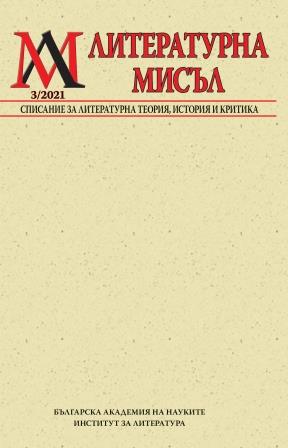Драматургията на Станислав Стратиев и наследството на commedia dell’arte
The Playwright of Stanislav Stratiev and the Heritage of Commedia Dell'arte
Author(s): Alexandar PanovSubject(s): Theatre, Dance, Performing Arts, Language and Literature Studies, Fine Arts / Performing Arts, Studies of Literature, Theory of Literature
Published by: Институт за литература - БАН
Keywords: Stanislav Stratiev; Commedia Dell'arte; dramaturgy
Summary/Abstract: The article seeks to outline the basic constructive principles in the dramaturgy of Stanislav Stratiev. Even in a superficial overview of his comedies, it is clear that they are not built according to the usual dramaturgical scheme, in which the action is driven by the opposition between a reasoned desire of one of the characters and the obstacles to fulfilling that desire posed by circumstances or by any other character. In most cases, Stratiev's initial situation introduces some sharp provocation to the every lifestyle, which provokes a series of actions following not the course of the dramaturgical action, but the accidental changes in the situation. It is this series of actions, realized in a series of poorly connected episodes in a single plot thread that also carries the main ideological message of the play, presenting various aspects of the main, developed in it, social problem. The theatrical model used by Stratiev is, by this sign, strongly reminiscent of the model introduced in the 16th century by the Italian commedia dell'arte. The article analyzes the four main features of this theatrical model. First of all, the plot framework in which the spectacle develops is considered. In the case of commedia dell'arte, this function is performed by the so-called canovaccio – a finding description of a series of episodes with a detailed presentation of the actors and their actions. This plot frame arranges a series of poorly connected episodes called lazzi. Their content highlights various absurdities and contradictions in a living subject more to ideological dogmas than to normal human logic. In these episodes, typical figures of public life take part, whose characters and actions define them more as masks than as living people. The only exception is only the couple in love, who are present in each of Stratiev's plays. Those in love, striving for normal human dreams and values, just as they do in the world, usually fall victim to the circumstances in which they are forced to live. And since a spectacle built on a typized plot and typized character-masks must always be fresh and topical, commedia dell'arte uses improvisation, in which typized acts are presented using topicals of the context in which the spectacle takes place, events, and lines. In the case of Stanislav Stratiev, this is the biggest problem facing the current productions of his plays, because, for the most part, they contain the reals, slogans, and problems of socialist society, which are not relevant today. At the same time, the main problems that Stratiev's comedies pose have not lost their relevance. And it's a challenge that's increasingly finding a solution.
Journal: Литературна мисъл
- Issue Year: 64/2021
- Issue No: 3
- Page Range: 30-53
- Page Count: 24
- Language: Bulgarian
- Content File-PDF

